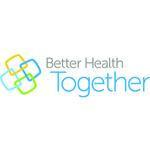
Shortly after my youngest daughter Jillian was a year old, she was diagnosed with spastic diplegia cerebral palsy.
Last year, she turned five and with that I saw an incredible change in her care, thanks largely to digital health.
Raising a child with special needs means constantly keeping track of mountains of data, including everything from test results and treatment plans to upcoming appointments. Additionally, it means sharing her medical history with a number of different clinicians and therapists.
As her mom and the person who accompanies her to appointments, I have a responsibility to know Jillian’s history inside and out, from prenatal to present. That is one way that I can manage her treatment. But for many years it was also a source of guilt and frustration. I was always worried about leaving out details, forgetting important questions, and if I'm being honest, retelling the same story to new clinicians is exasperating. All of the information is already in her chart.
Thankfully Electronic Health Records, or EHRs, changed all of that.
Jillian’s EHR went live in October of 2012, immediately improving things and getting to what really matters—the patient. Now, her entire history, current prescriptions, latest test results ,and schedule are all just a click away. Her EHR is easily accessible for me and her other caregivers. This allows me to stay in direct contact with her whole care team, updating them on developments and getting timely answers whenever I need them.
To go from the paper chart to a complete comprehensive story is so exciting!
I know it might sound like a strange thing to get excited about, but having all of this information available in this way has helped free up my time—not to mention Jillian's and the clinician's—and has had such a positive effect on my family. Because of digital health, I no longer worry about the things that might slip through the cracks. Instead, I focus on making sure Jillian gets the best, most efficient care possible so she can get back to the important task at hand — being a kid.
 You use tech to make the rest of your life more manageable. Now use it to manage your health as well.
You use tech to make the rest of your life more manageable. Now use it to manage your health as well.
![]() Discover how apps, software, and online support can help manage your family’s health care.
Discover how apps, software, and online support can help manage your family’s health care.
![]() Dr. Kim Foster shares how your family doctor may be going high-tech.
Dr. Kim Foster shares how your family doctor may be going high-tech.
![]() Do you or someone in your family have diabetes? Learn how you can use your smartphone to manage it.
Do you or someone in your family have diabetes? Learn how you can use your smartphone to manage it.
Learn more about the digital health tools available to you and your family and how they can help you take charge of your health care at www.betterhealthtogether.ca.

This is proudly sponsored by our friends at Canada Health Infoway: Better Health Together.
www.betterhealthtogether.ca